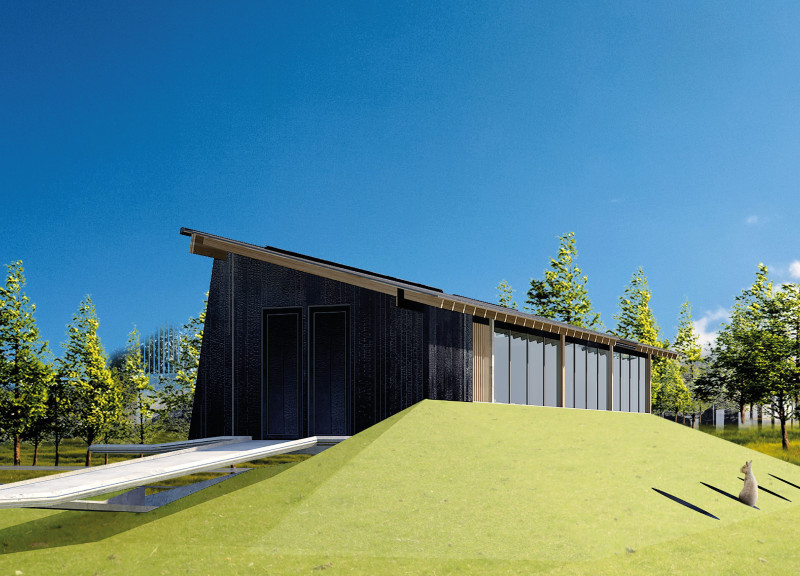5 key facts about this project
The Pape Nature Park Gateway is located in the southwest region of Latvia, functioning as a central point for outdoor leisure and community activities. The design responds to its natural surroundings while providing easy access for visitors. Focusing on user interaction and sustainability, the structure invites people to explore a space designed for various functional needs.
Site Organization
The layout is organized to promote smooth movement throughout the park. An inviting entrance serves as a visual cue, steering visitors toward different areas. Key features include camping zones and playgrounds that encourage families to engage with nature. A tree belt effectively separates private spaces from public areas, balancing openness with necessary seclusion.
Functional Spaces
The design includes important amenities that enhance both guest experience and operational efficiency. An office area accommodates police and sales management, along with storage for equipment and resources. Waiting areas are incorporated to assist and inform visitors, making their experience more enjoyable. Practical amenities, such as bathrooms and kitchen facilities, are carefully placed to ensure visitor comfort.
Sustainable Elements
Emphasis is placed on sustainability in several aspects of the design. The Tesla battery system, known as the Model Powerwall, provides necessary electrical output, contributing to an efficient energy strategy. Another interesting feature is a wall-mounted banner with acrylic protectors that serves as a durable information display. Soft lighting created with nylon threads adds to the site's visual appeal while remaining functional.
The layout offers a mix of recreational and educational elements that deepen the connection between visitors and the surrounding environment. By carefully planning both landscaping and functional components, the design supports a variety of community activities and enhances the overall visitor experience.


























